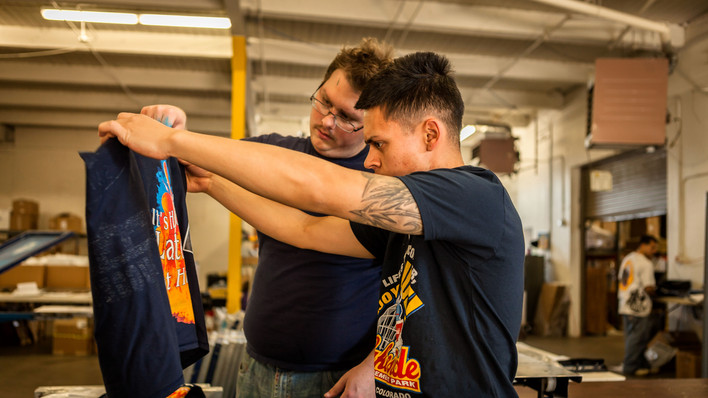Before the pandemic upended the way we work, supporting employees was mostly about providing a modern office space, opportunities for professional development, mobile tech, and collaborative platforms, and maybe a ping-pong table and snacks. For the most part, employers didn’t have to worry much about what happened after workers went home. That was then, however.
In the aftermath of COVID-19, businesses have had to reimagine every aspect of operations, including how work gets done and where. Most of us have had to learn to work from anywhere on any device, and companies have had to figure out how to keep their workers productive and enterprises safe and resilient in a challenging environment. Even as the pandemic eventually moves into its next phase (“Alive” as phase 2 in the Novel Economy), it will not be business as usual. Companies must find new and lasting ways to support their employees in an all-digital world, venturing far beyond what they did before.
Companies must support employees wherever they are
When the pandemic hit early in 2020, most companies had to scramble to support remote work overnight at scale. Over time, it became clear that the arrangement wasn’t likely to be temporary — the work-from-anywhere world, well overdue, is thankfully here to stay. In a global survey from more than 20,000 people around the world, Salesforce found that 60% of respondents expect remote work to become the norm, and almost two-thirds believe companies will be more flexible about working hours going forward. It’s important to understand that before COVID, or “BC” as I call it, the idea of WFH wasn’t well accepted. There were trust issues. IT felt that modern employee expectations meant they were “spoiled.”
While the acceleration of telecommuting (tele … we can talk about the relevance of that as a prefix another time) emerged out of necessity, many employees and companies have found that working from anywhere has its benefits. Employers are often finding they can save on costs while workers are just as productive, and often more satisfied. And I understand, and let’s all appreciate, that productivity may be the wrong metric. But, people aren’t just doing more work, they’re doing better work and are feeling satisfied in the process for many reasons.
For example, the Salesforce survey found that 62% of people believe remote work empowers them to live where they want. Others are unwilling to give up the flexibility they’ve secured to juggle work with other responsibilities. At the same time, more than half of those surveyed report they don’t exclusively work remotely, and three-quarters say remote work is only available to a select few. Enterprises have to urgently innovate to support the new normal of WFA (work from anywhere), in which work takes place in a variety of configurations and often off-site.
Moving toward an employee-centric model
In the work-from-anywhere world, companies are having to become more thoughtful about the employee experience (EX). Until now, many took corporate culture for granted, not something to craft with intent. Just as enterprises design user experience and customer experience, they now have an opportunity to reshape the employee experience in a way that drives engagement, productivity, and satisfaction. This starts with a mindset shift that puts employees first and involves thoughtfully deploying technology and restructuring business processes to prioritize employees’ physical and mental well-being.
Here are some concrete steps that companies can take to support their workforces today:
- Restructure for flexibility. Many employees already wanted greater freedom to engineer work around other commitments. Now, the need for flexibility is more urgent than ever, as employees care for dependents or oversee children doing remote learning. Employers need to rethink existing structures to make them more accommodating. For example, can some meetings be eliminated or rescheduled? Can workers have more freedom to get tasks done at times that work for them?
- Rely on data. Most companies employ sophisticated methods to gauge how their customers are feeling, but few do the same for employees. Historically, the closest thing was one-off surveys on satisfaction. Companies should put in place processes and tools to track employee experience over time. This can include regular check-ins from managers, frequent mini-surveys, or technology that measures sentiment in real-time. Just as in user experience design, organizations can evaluate how employees are interacting with digital work environments in order to make tools more intuitive, connected, and efficient. Having data in hand, and tracking it over time, can give employers a sense of how well they’re doing when it comes to improving employee experience.
- Employ technology that keeps workers safe. Workers are rightly worried about the risks of going back to the office. Workplace safety was the top concern of the global group Salesforce surveyed, with 79% saying it should be a high priority for businesses, and 72% saying technology should play a major role in this effort. This starts with the plexiglass barriers, temperature checks, and sanitizing stations we’re seeing today. But technology can play roles we haven’t explored yet: monitoring physical distancing in real-time with computer vision, guiding traffic flow through the office or using predictive analytics to TK.
- Invest in employees’ mental well-being. In the survey, respondents named employee mental health as the second-most important priority for businesses, after workplace safety. While working from home, employees are spending even more time on their screens not only for their jobs, but also in their personal lives. The division between work hours and personal time has eroded further. The always-connected environment can increase workers’ stress levels and reduce their ability to focus. Companies can check the pulse of employees’ mental health by gathering data on how employees are feeling. Next, they can take steps to proactively center employees’ well-being, perhaps by reconsidering the frequency of virtual meetings, enabling asynchronous engagement, signaling that it’s OK to ignore emails outside of the workday or introducing self-care days.
- Equip workers with the tools and skills to succeed. The sudden move to an all-digital world has left many workers feeling unprepared. According to Salesforce’s survey, over one-third of workers say they don’t have the technology they need to be effective while working remotely, and a majority say they lack in-demand skills. Additionally, 65% say that workforce development should be a high priority for businesses and 70% say that technology should play a major role in that effort. Employees need to not only beef up on the technical skills that are critical today, but also on soft skills that are taking on new importance, such as empathy, adaptability, and collaboration. Companies can deploy technology to assess workers on their current skill levels and to meet demand for helping them cultivate these capabilities remotely.
The future of work is here
Many of the processes, tools, and metrics companies use today were designed for past constructs. Yet the future of work is not only here, but also evolving in real-time. This is an opportunity to design new standards for operational excellence and employee happiness, empowerment, and wellness — ones that put employees front and center.
Companies that think proactively about their employee experiences and corporate culture will always benefit from more engaged, productive, and loyal employees. In the WFA workplace, prioritizing employee experience has become an imperative. Ultimately, taking employee well-being seriously and setting them up for success can drive innovation (and morale) that sets companies up to thrive.
This article was written by Brian Solis from CIO and was legally licensed through the Industry Dive publisher network. Please direct all licensing questions to legal@industrydive.com.
![]()



